Backlinks are one of the integral parts of SEO, and you need to earn backlinks to improve your domain authority and achieve better rankings in search engines.
Backlinks are essentially votes for your website from other websites. These votes tell the search engines that this content or page is reliable. So, the more the backlinks or votes, the higher the chances of your site ranking higher.
However, before jumping to making backlinks for your domain, here are some things that you need to know.
There are good backlinks and wrong backlinks.
You have to get the good ones (high-quality) to fetch beneficial results from SEO. But, which types of backlinks are good ones?
Characteristics of Good Backlinks
1. Relevant
A high-quality backlink should, first and foremost, be relevant to your content. One reason for this is because your visitor is more likely to click on an appropriate link.
For example, running an architecture website makes sense if you obtain a link from a building or lumber supplier. It implies that anyone searching for lumber to restore or build a home will almost certainly require the services of an architect.
However, search engines will consider several elements when determining whether or not a website is relevant to your topic.
You can find how relevant is a website to your business by inspecting it manually and see what content the webmaster post. Another way is to use a tool like Majestic that offers a metric called Topical Trust Flow. You will find out instantly what are the topics covered by the website.


2. Trusted
Another factor that contributes to a high-quality backlink is the site’s trustworthiness. One of the advantages of the internet today is that anyone may publish their work.
Unfortunately, not every source is reliable, especially if you need a high-quality backlink.
Scholarly publications, well-known websites like CNN and the BBC are just a few instances of reliable websites. Google examines the website’s prior contents and design in greater detail. If the design is professional, mobile-friendly, and has high user engagement, Google will be more likely to regard the website trustworthy.

3. Authority
As a general guideline, you should check the site’s authority from which you are receiving backlinks. The good news is that there are numerous tools available online for determining a website’s authority. Moz Domain Authority is one of the most widely utilized tools today. It uses a scale of 1 to 100 to determine authority. You may go even further by using Moz Page Authority to check the page authority.

4. Traffic
Before you consider using backlinks to improve your ranking, keep in mind that these links are primarily intended to drive visitors to another website. It was created to give readers more information. As a result, it’s not unexpected that Google considers backlinks that generate traffic to be high quality.
This is also why links discovered in the content’s midsection are more valuable than those placed in the content’s footer. The main reason for this is that it is rarely clicked on by consumers. A website with a lot of visitors will also have a lot of clicks. If their social media presence can produce clicks, the backlink’s quality will improve as well.
There are several tools you can use to estimate the traffic a domain gets. To name a few: ahrefs, Semrush, Ubbersugest.
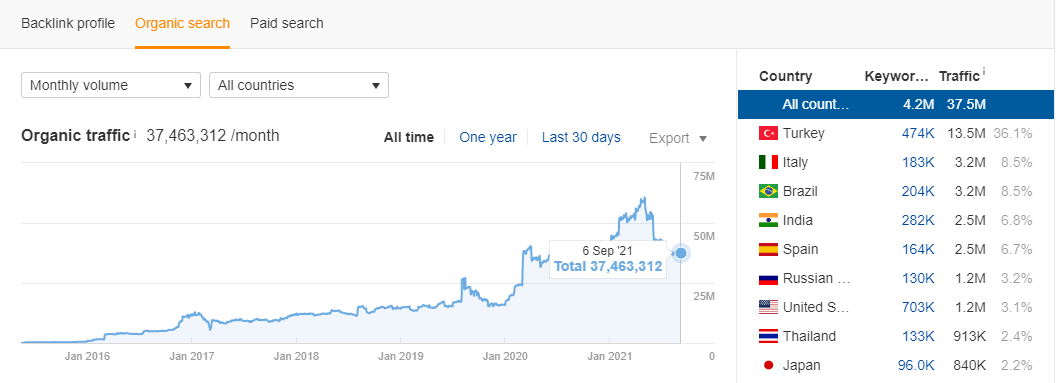
5. Uniqueness
The backlinks should also be distinct. It’s easier said than done to have unique links. It is good to obtain ten backlinks linking to your website from ten different websites. This gives your link-building strategy a natural appearance. It doesn’t appear like you and the website owner collaborated to offer you connections to their various material.
You must also evaluate the number of links present in the article and obtain links from various websites. Expect this link to be diluted if the text contains 20 or more links, and your website is one of them. Instead, you’d want to obtain a link from a site that rarely links to other sites.
6. No Exchange
Exchanging links with other websites is a frequent practice. This may be viewed by Google as a link scheme that violates their Webmaster Guidelines. In truth, it causes far more harm than good. It indicates that the relationships were not obtained through natural ways that may be exploited.
Is this, however, to say that you shouldn’t exchange connections with other websites? In truth, sharing links is a hazy subject. To be safe, keep the number of links traded to a minimal minimum.
In addition, you should only trade links with websites that are relevant to your subject to ensure that the link appears natural. Always check to see if the link is helping to improve the content’s quality. This is often the simplest method to justify the necessity for link exchange.
7. Social Media Signals
Social media signals are one of the things that Google looks into these days. Marketers frequently link their social media marketing efforts to their SEO operations.
This is also why, after releasing content on their site, websites will immediately share it on their Facebook and Twitter profiles. Google uses social media as a filter to analyze whether the content is relevant to a particular sector or niche.
When a piece of content goes viral, it simply implies that it provides valuable information to many individuals.
So, consider all these factors while link-building. There are various types of backlinks, but some of them are good for SEO.
Using a tool like SharedCount, you will be able to easily track the number of social signals (Facebook shares, Pinterest pins) of any given URL.
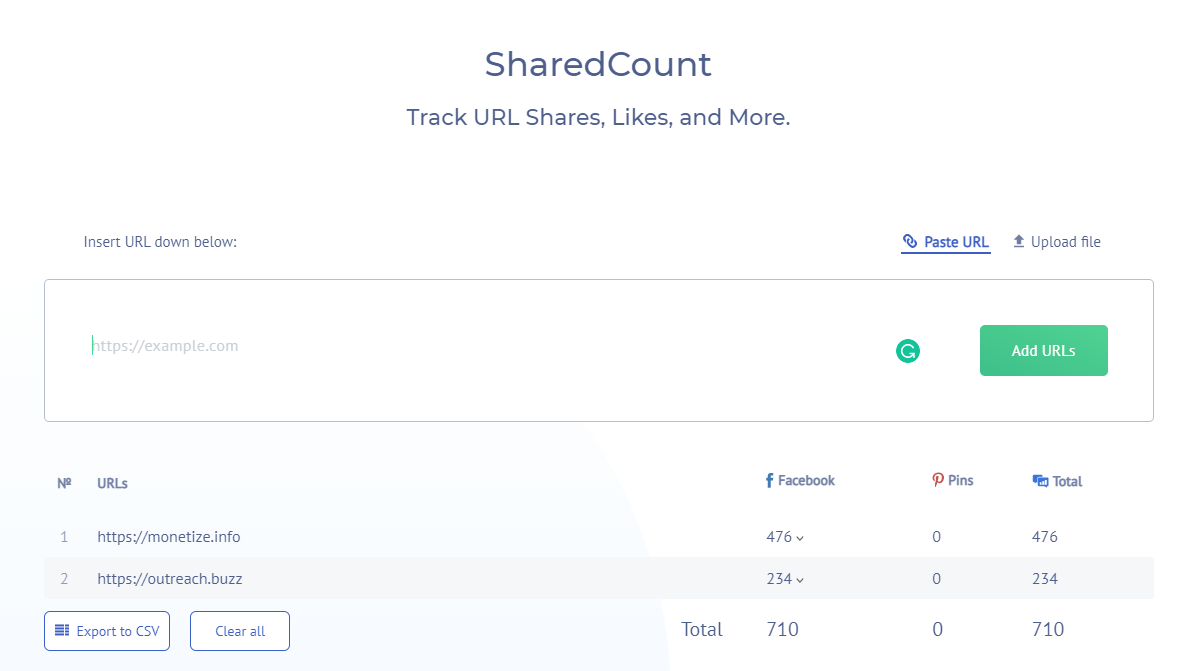
Types of Backlinks Best For SEO
1. Editorial Links
When your content is credited as the source of specific information, when a company representative is quoted or interviewed, or when your site is included in a link roundup on a particular topic, editorial backlinks are established.
Create evergreen content that establishes your standing as a thought leader to win praise for your site and brand as a go-to resource for interviews and industry expertise to acquire editorial backlinks.
Create shareable, exciting content with the potential to become viral. You may do the competitor research to cover the topic you haven’t included on your site yet. This way, you can have a more effective content strategy that will help you drive more quality editorial links.
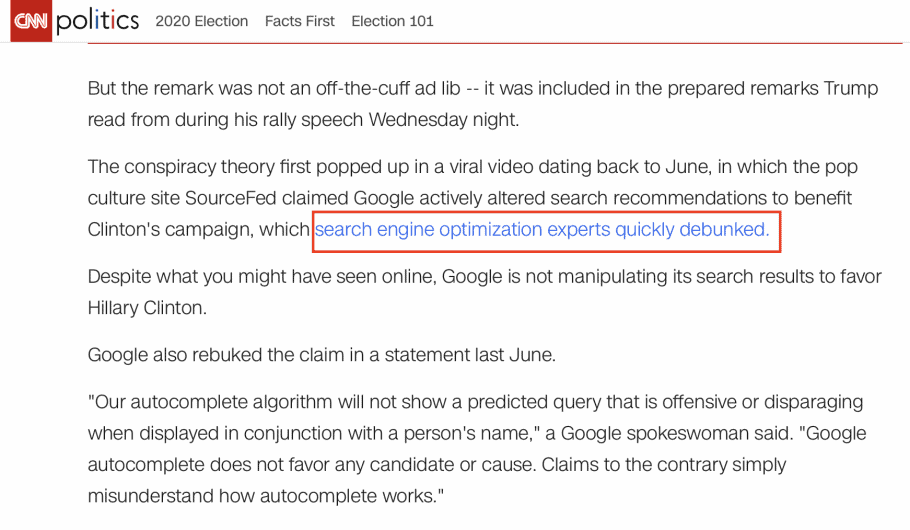
2. Relationship-Based Backlinks
When you build a relationship with a journalist or a website content provider, they happen. It’s a relationship-based link when they start citing you in content that frequently aligns with your expertise.
What makes these so significant is that once you’ve established a relationship, you can obtain additional links over time. It isn’t a one-time occurrence.
If you contact the website that utilized you as a source, you can turn a one-time editorial link into a relationship.
Otherwise, you can try contacting journalists and bloggers who write on related issues you can discover online. So, reach out to them with your high-quality content and see what kind of connection you can make.
3. Guest Blogging
When writing guest posts for well-known websites, it’s common to incorporate an editorial hyperlink to your site. Guest blogging outreach to secure valuable sites for these opportunities should be an essential part of any SEO plan.
So, reach out to some high-authority websites that accept guest posts and earn fruitful backlinks.
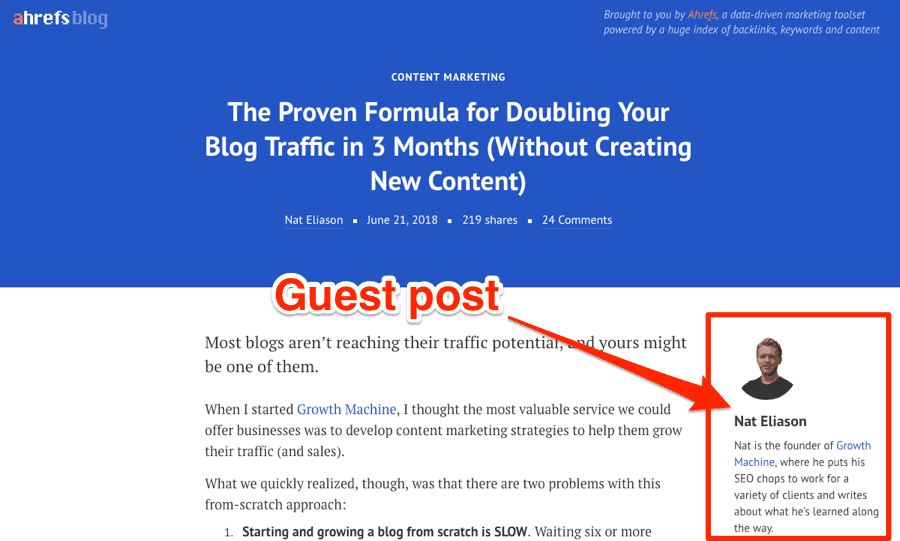
4. Business Profiles
When you create digital profiles for your company on business listing sites, social media, industry directories, and review sites, you almost always get the chance to publish a link back to your site.
Search engines view these listings as proof that a site is well-established. Hence, it’s a legit and profitable way to create backlinks that aid SEO.
5. General Directories
One of the simplest forms of links to obtain is those from general directories.
You usually only need to submit your website and some basic information through an automated process.
General directories accept links from any other website, regardless of its topic, industry, or quality. Overdoing it can be risky for this reason.
Due to their issue with relevancy, Google dislikes directories that accept links from anyone and everyone. You can still have some general directory links, but only from sites with high authority like Yelp, Yellowpages, Local, etc.
6. Niche Directories
Building links from niche directories is far more beneficial to your organization’s SEO.
They are more valuable to users than standard directories because they contain information on a particular subject. They are created for a given industry, issue, or type of business, among other things.
Although they are more challenging to locate and less authoritative than ordinary directories, they are more beneficial. As long as the directory is relevant, you can also construct extra links to it.
7. Webinar Backlinks
Webinars, as well as their recordings, provide especially excellent content for sites to link to. Websites often feature webinars on their pages, accompanied by a link and a mention of your company.
To gain these backlinks, use strategies similar to those used for blog promotion: the sites you’re targeting for guest blogging could also wish to include your webinar as a resource.
8. Freebies Links
Another effective strategy for gaining both attention and backlinks with a profound and long-term impact on SEO is to provide a beneficial tool for free.
This could be making a small but helpful asset, such as a cost-helpful calculator to your sector, or offering a free version of a commercial tool you offer. Promote the tool on sites with a comparable demographic to yours, as well as your guest blogging site targets, to attract backlinks.
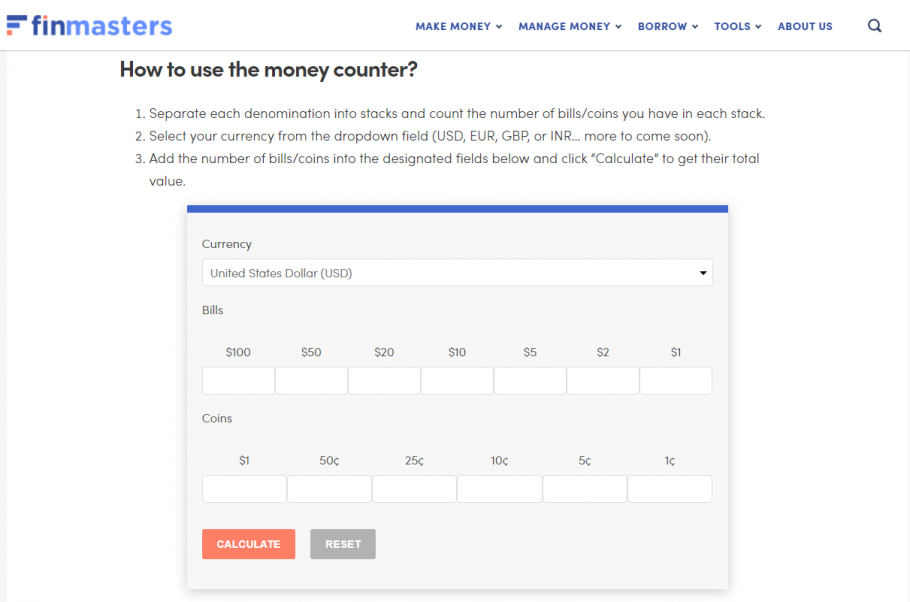
9. Author Bio Links
Some websites don’t allow links in the content or charge for it. Such websites mostly provide link opportunities in the author bio. These backlinks have a good impact on SEO even when they are not part of your content.
Depending on the guest post guidelines, you can add the promotional links in the author’s bio. So, it’s okay to proceed if you can earn some author bio links.
10. Acknowledgment Backlinks
When a company donates, has a representative speak at or sponsor an industry event, etc., sites frequently display acknowledgments. SEO tools that determine where your competitors get their backlinks can help you find and strategize around prospective prospects to bring your recognition.
11. Badge Links
Creating a badge to offer to other brands as recognition for their position or performance in some manner is a clever strategy for generating backlinks.
You gain a link back to your site when those sites proudly display the emblem on their pages. Once again, you’ll want to use SEO tools to identify sites with similar audiences to yours, allowing you to choose suitable badge program targets.
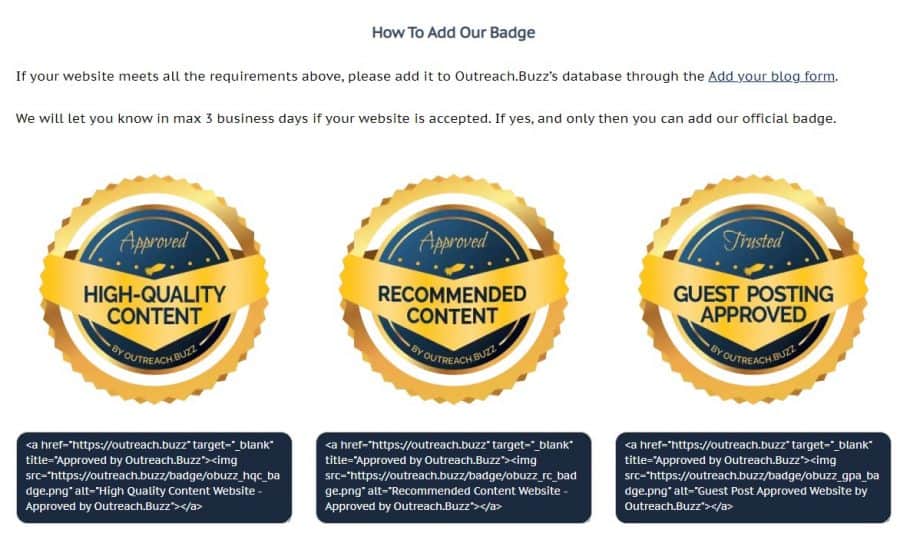
12. Press Release
These days, press releases are a dying art, but they may be a valuable marketing and SEO tool. When you write a newsworthy press release about your company, you may utilize it to get backlinks from media outlets.
Press releases for a new product, a new location launching, a new collaboration or sponsorship, and a business rebranding are examples of the greatest forms of press releases that can alert or inform your customers.

Consider releasing a press release on a PR service like PRWeb when you have news of this nature. You might acquire some natural links from media outlets, which is the best outcome. However, you can try contacting local sources to see if they’d like to publish anything for themselves and provide backlinks.
13. Comment Backlinks
Posting actual and relevant content commentary with a backlink is typically permitted if it adds value to the discourse. However, if done in a spammy manner, this method might negatively impact your search engine reputation. Be sure not to overdo it.
14. Forum Links
Some people may advise you to join online forums and link to yourself in your posts and responses. Another type of link to be cautious about is this one. Spammers have misused it in the past, and as a result, Google does not look highly on them.
You can still utilize this method if you’re careful, as you can with the other cases. Ensure that you only post links to high-quality, relevant forums, and only where they would benefit the readers.
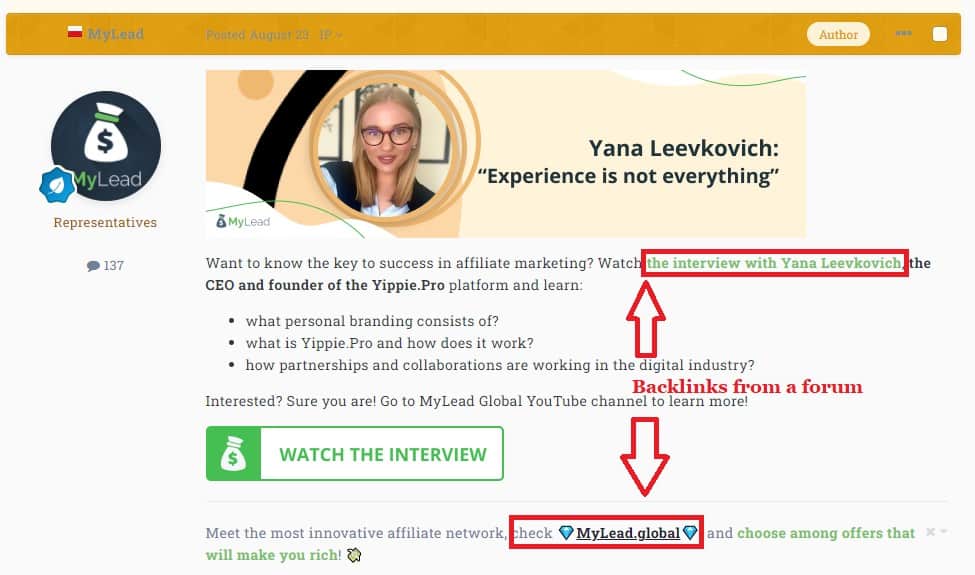
15. Resource Page Links
Many websites have resource pages to provide their audience with helpful sources for specific topics. You can reach out to such websites that your business somehow relates to and benefit their audience. You’ll quickly get listed on their resource page with a link back to your site if you are relevant.
And, done!
Conclusion
Now, you know 15 types of backlinks that are best for SEO, and you should focus on these in your link building. Always prioritize quality over quantity, and you’ll excel in SEO.
A high-quality backlink is far superior to numerous spammy, low-quality links. Therefore, follow the best link-building practices and earn the types of backlinks mentioned above.
You may also hire a digital marketing firm to handle your online marketing and earn high-quality backlinks for your site. Do what suits you best!
Time to make a move!
Godspeed!

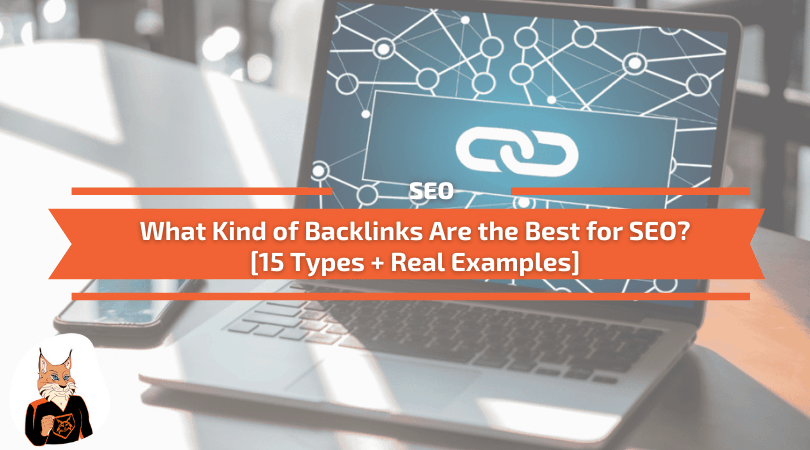
 Source
Source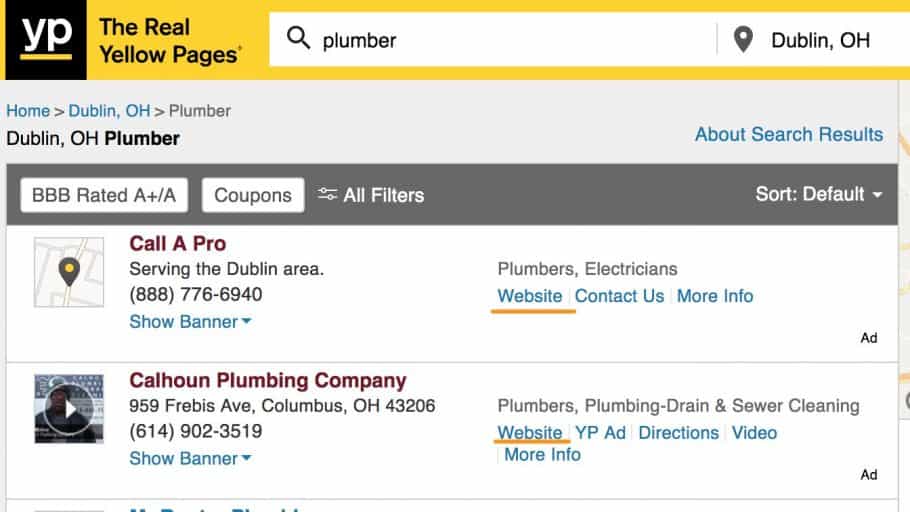 Source
Source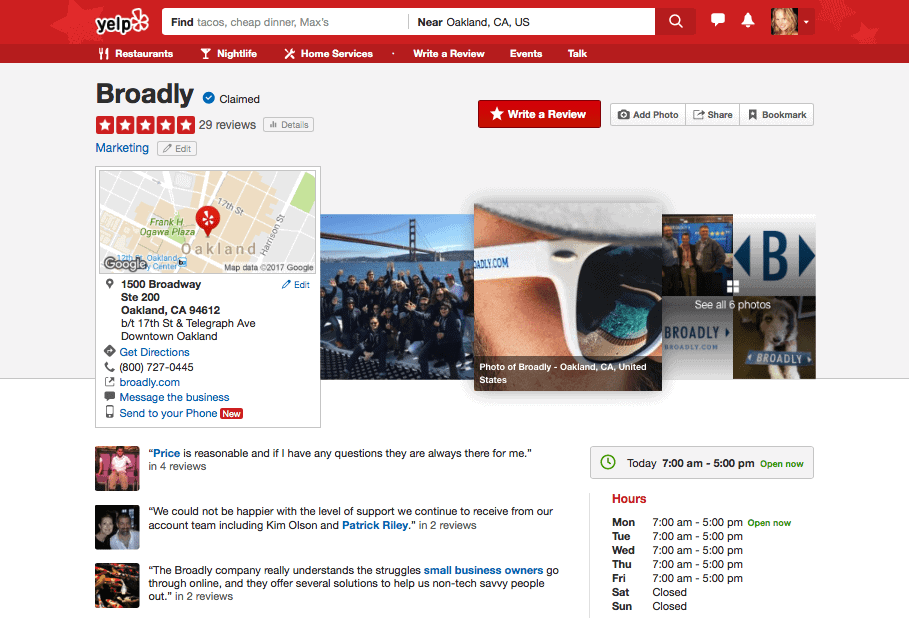 Source
Source Source
Source![How to Implement Schema To Improve Your SEO [Complete Guide]](https://competico.com/wp-content/uploads/2019/03/How-to-Implement-Schema-To-Improve-Your-SEO-Complete-Guide-300x167.png)

![Read more about the article How to create an expert roundup [Complete Guide]](https://competico.com/wp-content/uploads/2018/08/global-expert-img3_0-300x208.jpg)


Great article, Really awesome